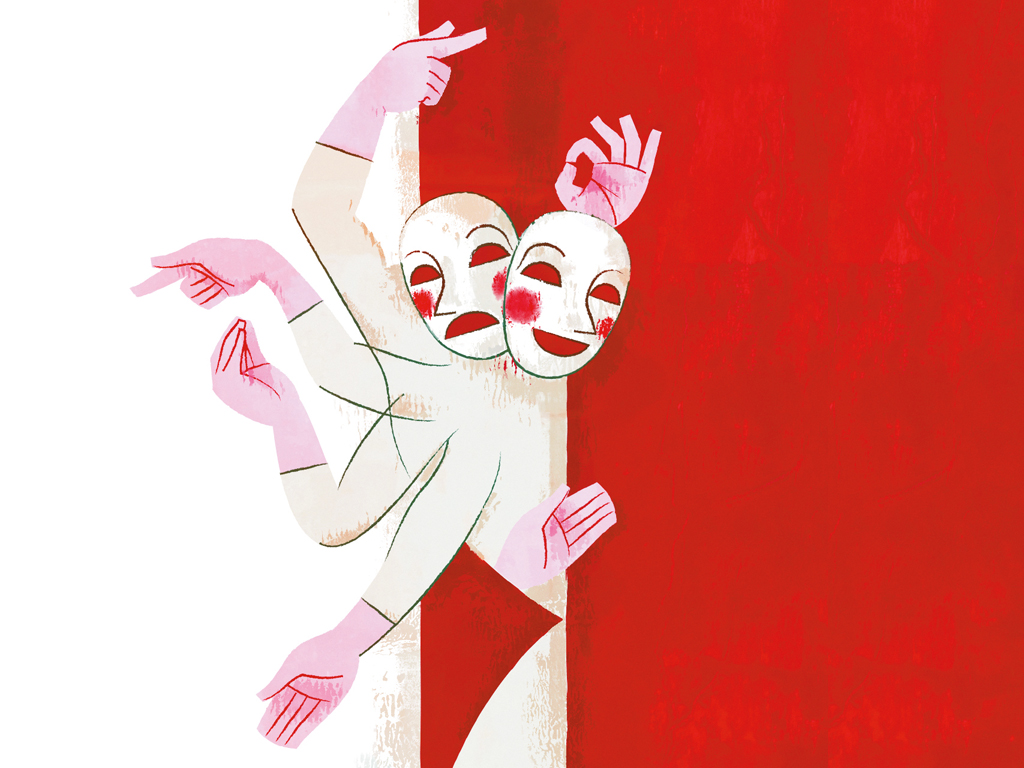
Quante tribù
Sindromi, manie, luoghi e abitudini di quel microcosmo di umanità che vive e soggiorna sull’isola
di • by Renato Esposito | Illustrazioni • Illustrations di Fabio Finocchioli
Il fascino del microcosmo Capri nasce, si spegne e rivivisce nelle sue contraddizioni. Come un fiume carsico, la sua iridescente teatralità genera insulari tribù che d’estate e d’inverno convivono in un magnetico palcoscenico, caotico caravanserraglio, dove ognuno può essere, o s’illude d’essere, protagonista. Questo congenito capricentrismo trae la sua linfa vitale da insulari 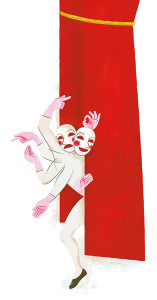 varianti psicologiche che, stratificandosi nei secoli, hanno creato un unicum. Proviamo, con sufficiente ironia ed autoironia, ad elencare le tante Capritribù dove si manifestano le peculiarità dell’homo caprensis. | So Many Tribes. Syndromes, manias, places and habits of the microcosm of humanity that lives or stays on the island
varianti psicologiche che, stratificandosi nei secoli, hanno creato un unicum. Proviamo, con sufficiente ironia ed autoironia, ad elencare le tante Capritribù dove si manifestano le peculiarità dell’homo caprensis. | So Many Tribes. Syndromes, manias, places and habits of the microcosm of humanity that lives or stays on the island
The fascination of the Capri microcosm starts, ends and lives again in its contradictions. Like a karst river, its iridescent theatricality generates island tribes that in summer and winter live together on a mesmerizing stage, in a chaotic caravanserai where everyone can be, or delude themselves that they are, a star. The lifeblood of this congenital Capri-centric state derives from psychological island variants that, stratifying over the centuries, have created a unique species.
Let us endeavour to list, with a substantial dose of irony and self-mockery, the many Capri tribes that show the distinctive features of homo caprensis.
Stereotipisti
È una categoria immarcescibile, massimalista, qualunquista, vive di luoghi comuni. La Piazzetta, che Fersen chiamava una “sputacchiera di pettegolezzi”, è il suo regno, l’arena dorata dei Capristereotipi. Tra «Capri non è più la stessa» e «Che brutta gente c’era ieri al night», tra «A Capri non si deve venire a Ferragosto» e «Solo al Miracapri si mangiano i veri ravioli capresi», tra un aperitivo, un limoncello e una patatina la serata passa lenta. | The Stereotypists. An indestructible, maximalist, politically apathetic type that lives on commonplaces. The Piazzetta, which Fersen called a “spittoon of gossip”, is their kingdom, the golden arena of the Capri-stereotypes. Making comments such as “Capri isn’t the same any more” and “What ugly people there were at the night club yesterday”, or “You should never go to Capri on the August bank holiday” and “You can only find proper Capri ravioli at Miracapri”, between an aperitif, a limoncello and some potato crisps, the evening passes slowly.
Isolazionisti (Caprisovranisti)
La loro idea fissa è creare la Repubblica Caprese, paradiso fiscale per i ricchi di tutto il mondo, dove l’Iva è un brutto ricordo. Fautori del 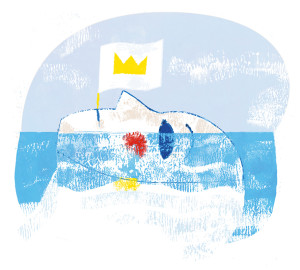 numero chiuso e di una tassa sia di soggiorno che di sbarco. Tutti nel mondo dovranno pagare per utilizzare il nome “Capri”. Gli isolazionisti hanno una particolare sindrome: l’isolitudine. D’inverno, quando Capri è isolata dalla terraferma, provano una sottile incontenibile gioia, uno stato di esclusivo benessere, lontani dal mondo. | The Isolationists (Capri-sovereigntists). Their idée fixe is to create the Republic of Capri, a tax paradise for the wealthiest people from around the world, where VAT is just an unpleasant memory. They are advocates of a limited place scheme and a daily tax, both for staying overnight and landing. The whole world must pay to use the name “Capri”. The isolationists suffer from a particular syndrome: isolitudine (island solitude). In winter, when Capri is isolated from the mainland, they feel a subtle, uncontainable joy, a state of exclusive well-being, far away from the world.
numero chiuso e di una tassa sia di soggiorno che di sbarco. Tutti nel mondo dovranno pagare per utilizzare il nome “Capri”. Gli isolazionisti hanno una particolare sindrome: l’isolitudine. D’inverno, quando Capri è isolata dalla terraferma, provano una sottile incontenibile gioia, uno stato di esclusivo benessere, lontani dal mondo. | The Isolationists (Capri-sovereigntists). Their idée fixe is to create the Republic of Capri, a tax paradise for the wealthiest people from around the world, where VAT is just an unpleasant memory. They are advocates of a limited place scheme and a daily tax, both for staying overnight and landing. The whole world must pay to use the name “Capri”. The isolationists suffer from a particular syndrome: isolitudine (island solitude). In winter, when Capri is isolated from the mainland, they feel a subtle, uncontainable joy, a state of exclusive well-being, far away from the world.
Passatisti
Fu Marinetti a coniare questa forma mentis che si identifica nella luna caprese passatista. Sono coloro che vivono sempre rivolti al passato. Il loro motto è «Come era bella la Capri di una volta». Collezionisti di antichità, postano sui social le immagini della vecchia Capri ottocentesca. Vivrebbero volentieri nell’età dell’oro senza pensare che fino alla Seconda Guerra Mondiale la mortalità infantile sull’isola era altissima e l’istruzione era una prerogativa di pochi. | The Passatisti (lovers of the past). It was Marinetti who coined the mind-set that can be identified in this traditionalist Capri world. They are people who spend their lives always looking back to the past.
Their motto is: “How beautiful the old Capri used to be”. These antique collectors post images of the old 19th century Capri on social media. They would happily live in that golden age without considering the fact that up until the Second World War, infant mortality on the island was extremely high and education was the prerogative of the few.
Neofuturisti
 Vorrebbero trasformare l’isola in un Eden della tecnologia. La Capri cablata e digitalizzata considera la sconnessione peggio della peste del Seicento. Programmano di sostituire tutti i biglietti cartacei dell’isola con un Capri-iPhone. Sognano un ologramma della Grotta Azzurra da utilizzare nelle giornate ventose per i gruppi di coreani. Metrò e scale mobili prenderanno il posto di funicolare e autobus. Il loro libro di riferimento è Un sogno di Armageddon dello scrittore H.G. Wells che profetizza una Capri del Tremila, un incubo prossimo venturo. | The Neo-futurists. They’d like to transform the island into a technological Eden. This wired, digitalized Capri considers being offline to be worse than the plagues of the 17th century. They are planning to replace all paper tickets on the island with a Capri-iPhone.
Vorrebbero trasformare l’isola in un Eden della tecnologia. La Capri cablata e digitalizzata considera la sconnessione peggio della peste del Seicento. Programmano di sostituire tutti i biglietti cartacei dell’isola con un Capri-iPhone. Sognano un ologramma della Grotta Azzurra da utilizzare nelle giornate ventose per i gruppi di coreani. Metrò e scale mobili prenderanno il posto di funicolare e autobus. Il loro libro di riferimento è Un sogno di Armageddon dello scrittore H.G. Wells che profetizza una Capri del Tremila, un incubo prossimo venturo. | The Neo-futurists. They’d like to transform the island into a technological Eden. This wired, digitalized Capri considers being offline to be worse than the plagues of the 17th century. They are planning to replace all paper tickets on the island with a Capri-iPhone.
They dream of a hologram of the Grotta Azzurra to be used on windy days for all those groups of Koreans. A metro and escalators will replace the funicular and buses. Their reference book is A Dream of Armageddon by H.G. Wells, who prophesies a Capri of the year 3000, a nightmare of the future.
Umbratili
La bellezza inquietante dell’isola non sempre combacia con la creazione artistica. Molti hanno vissuto la loro esperienza caprese en plein air. Neruda aveva un rapporto fisico, sensuale, con la natura. Gorkji nei sette anni vissuti sull’isola fondò una scuola rivoluzionaria e scrisse opere importantissime. Ma sono molti che, citando Edwin Cerio, si sono sottratti al “dardeggio mondano”. E proprio nella più discreta Anacapri, Richard Reynolds, padre di Pamela Reynolds, a Villa Monticello, riuniva intorno a sé la comunità di scrittori inglesi che soggiornavano a Villa Fraita, a Il Rosaio, a Villa Materita e a Villa Quattro Venti. Francis Brett Young, Compton Mackenzie, William Butler Yeats, Louis Golding e i coniugi Brewster crearono tra le due guerre la “Piccola Oxford, la Montparnasse, il Parnaso anacaprese”. Certamente è Graham Greene l’ultimo grande esponente del club degli Umbratili. A Villa Il Rosaio, isolandosi dal mondo, riuscì a creare tanti romanzi di spionaggio. La scandalosa vita della dottoressa Moore lo ispirò nella stesura del libro Viaggio con la zia. Lo scrittore, cittadino onorario anacaprese, componeva i suoi capolavori di fronte ad una parete bianca. Temeva che la bellezza delle colline del Solaro lo distraesse. Troppa bellezza è fuorviante, non ti fa concentrare, porta la tua mente altrove. | The reclusives. The disturbing beauty of the island does not always combine well with artistic creation. Many people have lived their Capri experience en plein air. Neruda had a physical, sensual relationship with nature. Gorky, in the seven years that he lived on the island, founded a revolutionary school and wrote some important works. But many, to quote Edwin Cerio, were escaping from the “blaze of high society”. And it is in the more discreet Anacapri where Richard Reynolds, father of Pamela Reynolds, gathered around him at Villa Monticello the community of British writers who stayed at Villa Fraita, Il Rosaio, Villa Materita and Villa Quattro Venti. Between the two world wars, Francis Brett Young, Compton Mackenzie, William Butler Yeats, Louis Golding and the Brewsters created the “Little Oxford, the Montparnasse, the Anacapri Parnassus”. And Graham Greene was definitely the last great exponent of the Reclusive club. Isolating himself from the world at Villa Il Rosaio, he succeeded in writing many of his spy novels. The scandalous life of Dr. Moore inspired him to write Travels with my Aunt. An honorary citizen of Anacapri, Greene wrote his novels facing a white wall. He was afraid that the beauty of the Solaro hills would distract him. Too much beauty is deceptive: it doesn’t allow you to concentrate, it takes your mind elsewhere.
Catastrofisti
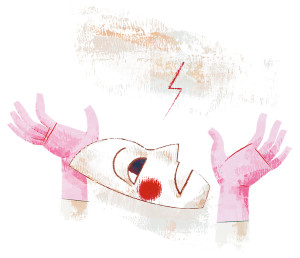 Appena arrivano in albergo chiedono gli orari di partenza degli aliscafi. Capri è una distopia azzurra. Vedono le previsioni del tempo quindici giorni prima dell’arrivo. Vivono la vacanza come un supplizio di Tantalo. Non vanno al mare per non ustionarsi e per il timore delle meduse. Al ristorante ordinano sempre le mezze porzioni. In albergo litigano con tutti, borbottando «qui si fanno pagare anche l’aria». | The Catastrophists. No sooner have they arrived at the hotel, then they ask for the hydrofoil departures timetable. Capri is a blue dystopia. They look at the weather forecast fifteen days before they are due to arrive.
Appena arrivano in albergo chiedono gli orari di partenza degli aliscafi. Capri è una distopia azzurra. Vedono le previsioni del tempo quindici giorni prima dell’arrivo. Vivono la vacanza come un supplizio di Tantalo. Non vanno al mare per non ustionarsi e per il timore delle meduse. Al ristorante ordinano sempre le mezze porzioni. In albergo litigano con tutti, borbottando «qui si fanno pagare anche l’aria». | The Catastrophists. No sooner have they arrived at the hotel, then they ask for the hydrofoil departures timetable. Capri is a blue dystopia. They look at the weather forecast fifteen days before they are due to arrive.
They spend the holiday in torment. They don’t go to the beach in case they get sunburnt, and for fear of jellyfish. At the restaurant they always order half portions. In the hotel, they quarrel with everyone, muttering: “they charge you for the air you breathe in this place.”
Caromisti
Come centauri il loro corpo si plasma, è un tutt’uno con il carrellino elettrico. La loro metamorfosi in Caromo (metà carrello, metà uomo) è una particolarità del darwinismo caprese. Tra montagne di valigie e voluminosi pacchi di Amazon sono i novelli Mercuri dell’isola azzurra. Fu Renzo Arbore negli anni Settanta a lanciare il loro motto: «Attenzioni…». Guidare un carrellino elettrico attraversando la Piazzetta è il sogno recondito di ogni Vip. Mariah Carey, attraversava cantando con il suo carrellino via Vittorio Emanuele e dopo aver salutato Guido andava ad abbracciare il suo amatissimo e indimenticabile Franco. | The Carro-mists. Like centaurs, their bodies mould into and become one with the electric golf-cart. Their metamorphosis into Caromo (half cart, half man) is one of the distinctive features of Capri Darwinism. Sitting amid mountains of suitcases and bulky Amazon packages they’re the new Mercurys of the azure isle. It was Renzo Arbore in the 1970s who launched their motto: “Look out…!” Driving an electric golf-cart across the Piazzetta is the secret dream of every celebrity. Mariah Carey drove along Via Vittorio Emanuele in her golf-cart, singing, and after greeting Guido she went over to hug her beloved and unforgettable Franco.
Metrocementisti
Costruirebbero pure sui Faraglioni. Cetrella è l’Eldorado. La cementite gli scorre nelle vene. Il metro quadro il verbo. Hanno comprato e venduto casa a Capri più di una volta. Trasformare il pergolato in un loft è il loro recondito sogno. Quando, dopo abusi e condoni, si costruiscono la casa ideale la fittano con Booking a luglio e agosto perché «la città d’estate è meravigliosa». | The Concrete Metre-ists. They’d even build on the Faraglioni. Cetrella is their Eldorado. Concretitis runs in their veins. The square metre is their bible. They’ve bought and sold houses on Capri several times. Transforming the pergola into a loft is their secret dream. When, after various illegal constructions and amnesties, they build the perfect home, they rent it out on Booking.com in July and August, because “the city is wonderful in summer, you know”.
Pallonisti
Antesignani delle fake news. Sono i maestri dell’eccesso. Il loro padre storico è il caprese Bussetti. Un giorno Bussetti arrivò a sostenere che,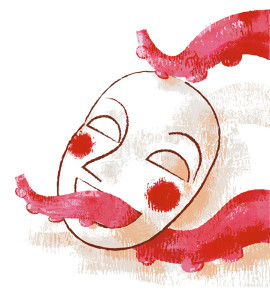 dopo un fortunale, aveva trovato sulle scale della chiesa molti polpi che, stremati, ritornavano al mare. Dire una “palla” è un’arte che si tramanda da padre in figlio. Richiede arguzia e conoscenze pseudo storiche. Citando Umberto Eco potremo dire che la pallologia caprese si basa sulla falsificazione della realtà ed è la fonte del Mito. | The Pallonisti – Bullshitters. The precursors to fake news, these are the masters of excess. Their historical father is the Capri-born Bussetti. One day, Bussetti went so far as to claim that he had found lots of octopuses on the steps of the church, after a storm at sea, worn out as they struggled back to the sea. Telling a “palla” (a lie) is an art that is passed down from father to son. It requires wit and pseudo-historical knowledge. To quote Umberto Eco, we can say that Capri bullshitting is based on the falsification of reality and it is the source of the Legend.
dopo un fortunale, aveva trovato sulle scale della chiesa molti polpi che, stremati, ritornavano al mare. Dire una “palla” è un’arte che si tramanda da padre in figlio. Richiede arguzia e conoscenze pseudo storiche. Citando Umberto Eco potremo dire che la pallologia caprese si basa sulla falsificazione della realtà ed è la fonte del Mito. | The Pallonisti – Bullshitters. The precursors to fake news, these are the masters of excess. Their historical father is the Capri-born Bussetti. One day, Bussetti went so far as to claim that he had found lots of octopuses on the steps of the church, after a storm at sea, worn out as they struggled back to the sea. Telling a “palla” (a lie) is an art that is passed down from father to son. It requires wit and pseudo-historical knowledge. To quote Umberto Eco, we can say that Capri bullshitting is based on the falsification of reality and it is the source of the Legend.
Caprinarcisi
È la versione caprese di Dorian Grey. Stanno ore a specchiarsi nelle vetrine di via Camerelle. Vogliono decidere sempre per tutti come 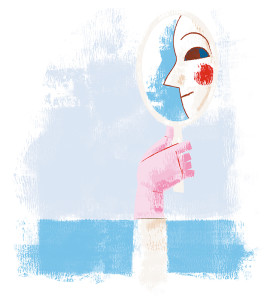 organizzare la serata. Il loro ego smisurato riecheggia da Cetrella a Marina Piccola. In taverna afferrano il microfono e mimando uno spogliarello danno fondo, ohibò, al repertorio scurril-neomelodico. Al mattino non si svegliano mai prima delle 13 e chiedono al concierge di turno un caffè con un’aspirina. | The Capri-narcissists. This is the Capri version of Dorian Grey. They spend hours looking at themselves in the shop windows of Via Camerelle. They always want to decide how to organize the evening for everyone. Their boundless ego echoes around from Cetrella to Marina Piccola. In the taverna they grab the microphone and, miming a striptease, provide the background, tut-tut, to the scurrilous-neomelodic repertoire. In the morning they never wake up before 1 p.m. and then ask the concierge at the desk for a coffee with an aspirin.
organizzare la serata. Il loro ego smisurato riecheggia da Cetrella a Marina Piccola. In taverna afferrano il microfono e mimando uno spogliarello danno fondo, ohibò, al repertorio scurril-neomelodico. Al mattino non si svegliano mai prima delle 13 e chiedono al concierge di turno un caffè con un’aspirina. | The Capri-narcissists. This is the Capri version of Dorian Grey. They spend hours looking at themselves in the shop windows of Via Camerelle. They always want to decide how to organize the evening for everyone. Their boundless ego echoes around from Cetrella to Marina Piccola. In the taverna they grab the microphone and, miming a striptease, provide the background, tut-tut, to the scurrilous-neomelodic repertoire. In the morning they never wake up before 1 p.m. and then ask the concierge at the desk for a coffee with an aspirin.
Esoterici
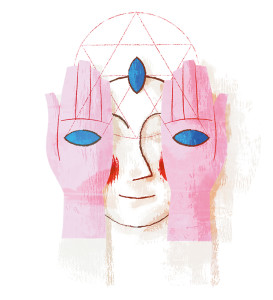 Vi è un lato oscuro dell’isola affascinante e misterioso che sembra contrapporsi alla sua inquietante bellezza. È un déjà-vu, un’ombra azzurra che risucchia in un vortice, in un’altra dimensione. Come afferma Dudù La Capria in Capri e non più Capri, nelle grotte dell’isola è presente una magnetica forza che ti fa perdere la percezione spazio-temporale. Nella Grotta di Matermania, nelle Grotte delle Felci e del Castiglione questa attrazione fatale ancora si percepisce. Ma è nelle ville, nelle dimore storiche e in tante case che questa energia è ancora viva. Villa Lysis, Villa San Michele, Villa Mithras, Villa Quattro Venti, Villa Eliana, Villa Saida, sono l’emblema di questo esoterismo caprese. Jacques Fersen, Melchior Lechter, Marguerite Hoffmann, Gilbert Clavel, la Contessa Elfi Lovatelli, la marchesa Casati Stampa, la Principessa Mananà Pignatelli, cercarono nella natura di Capri occulti segnali, insulari alchimie. Ma la regina di questo esoterismo in salsa caprese è Carmela Capasso Buronzo, in arte Madame Carmen, chiaroveggente, intima amica di Edda Ciano. Leggeva le carte alla nomenclatura fascista e non solo. Villa Madonnina, per i capresi Villa Buronzo, divenne il crocevia di principi della Dolce Vita e di poveri pescatori. A tutti la veggente regalava un’illusione, una speranza di vita. | Esoterics. There’s a dark side to this fascinating and mysterious island that seems to provide a contrast to its disquieting beauty. It is a déjà-vu, a blue shadow that sucks you into a vortex, another dimension. As Dudù La Capria maintains in Capri e non più Capri, in the island’s grottos there is a magnetic force that makes you lose your sense of space and time. In the Matermania, Felci and Castiglione Grottos, this fatal attraction can still be felt. But it is in the villas, the historic houses and in many homes that this energy still lives on. Villa Lysis, Villa San Michele, Villa Mithras, Villa Quattro Venti, Villa Eliana, Villa Saida, are the emblem of this Capri esotericism. Jacques Fersen, Melchior Lechter, Marguerite Hoffmann, Gilbert Clavel, Countess Elfi Lovatelli, Marchesa Casati Stampa and Princess Mananà Pignatelli all sought to discover hidden signs and island alchemies, in the nature of Capri. But the queen of this Capri-style esotericism was Carmela Capasso Buronzo, who went by the professional name of Madame Carmen, a clairvoyant and close friend of Edda Ciano. She read the cards for some of the leading Fascist figures, among others. Villa Madonnina, known as Villa Buronzo to the Capri inhabitants, became a crossroads for princes of La Dolce Vita and for poor fishermen. To all of them, the clairvoyant offered some illusion, some hope for their lives.
Vi è un lato oscuro dell’isola affascinante e misterioso che sembra contrapporsi alla sua inquietante bellezza. È un déjà-vu, un’ombra azzurra che risucchia in un vortice, in un’altra dimensione. Come afferma Dudù La Capria in Capri e non più Capri, nelle grotte dell’isola è presente una magnetica forza che ti fa perdere la percezione spazio-temporale. Nella Grotta di Matermania, nelle Grotte delle Felci e del Castiglione questa attrazione fatale ancora si percepisce. Ma è nelle ville, nelle dimore storiche e in tante case che questa energia è ancora viva. Villa Lysis, Villa San Michele, Villa Mithras, Villa Quattro Venti, Villa Eliana, Villa Saida, sono l’emblema di questo esoterismo caprese. Jacques Fersen, Melchior Lechter, Marguerite Hoffmann, Gilbert Clavel, la Contessa Elfi Lovatelli, la marchesa Casati Stampa, la Principessa Mananà Pignatelli, cercarono nella natura di Capri occulti segnali, insulari alchimie. Ma la regina di questo esoterismo in salsa caprese è Carmela Capasso Buronzo, in arte Madame Carmen, chiaroveggente, intima amica di Edda Ciano. Leggeva le carte alla nomenclatura fascista e non solo. Villa Madonnina, per i capresi Villa Buronzo, divenne il crocevia di principi della Dolce Vita e di poveri pescatori. A tutti la veggente regalava un’illusione, una speranza di vita. | Esoterics. There’s a dark side to this fascinating and mysterious island that seems to provide a contrast to its disquieting beauty. It is a déjà-vu, a blue shadow that sucks you into a vortex, another dimension. As Dudù La Capria maintains in Capri e non più Capri, in the island’s grottos there is a magnetic force that makes you lose your sense of space and time. In the Matermania, Felci and Castiglione Grottos, this fatal attraction can still be felt. But it is in the villas, the historic houses and in many homes that this energy still lives on. Villa Lysis, Villa San Michele, Villa Mithras, Villa Quattro Venti, Villa Eliana, Villa Saida, are the emblem of this Capri esotericism. Jacques Fersen, Melchior Lechter, Marguerite Hoffmann, Gilbert Clavel, Countess Elfi Lovatelli, Marchesa Casati Stampa and Princess Mananà Pignatelli all sought to discover hidden signs and island alchemies, in the nature of Capri. But the queen of this Capri-style esotericism was Carmela Capasso Buronzo, who went by the professional name of Madame Carmen, a clairvoyant and close friend of Edda Ciano. She read the cards for some of the leading Fascist figures, among others. Villa Madonnina, known as Villa Buronzo to the Capri inhabitants, became a crossroads for princes of La Dolce Vita and for poor fishermen. To all of them, the clairvoyant offered some illusion, some hope for their lives.
Chiazzieri
Trascorrono in piazza la maggior parte del tempo. “A chiazza” è il loro ufficio dove stipulano affari e coltivano amicizie. Sono maestri della Capriflanerie. Nei suoi 678 metri quadrati, con sguardi e parole, coltivano l’arte del pettegolezzo sagace e pungente. D’estate il chiazziere caprese lo intravedi dalle 7 alle 9, poi corre ai posti di combattimento. Il re dei piazzisti capresi è “l’incasavasolo”, ovvero quello che in piedi occupa il “basolo” centrale, il centro di gravità permanente del salotto del mondo. Per i piazzisti la rosa dei venti è il Vangelo. Ogni mattina arrivano fino alla piazzetta della funicolare, guardano il mare e annusando il vento come Seneca sentenziano a caso «Greco e levante. Tramontana secca.
Bafuogno fracito». Tatore Panza, famoso meteorista, per decenni ha comunicato in piazza agli ignari turisti le previsioni del tempo. | The Chiazzieri (Piazzetta-ists). They spend most of their time in the piazzetta. “A chiazza” (the piazzetta) is their office, where they do business and cultivate friendships. They’re masters of Capri-flanerie. In the 678 square metres of the Piazzetta, with glances and words, they cultivate the art of the shrewd, biting piece of gossip.
In summer, you can catch sight of the Capri chiazziere from 7 to 9, and then they hurry to take up their combat positions. The king of Capri piazzisti is the “incasavasolo”, in other words the person who occupies the central “basolo”, or slab, in the piazza, the permanent centre of gravity for the world’s drawing-room. For piazzisti, the wind rose is their bible.
Every morning they go up to the funicular piazzetta, gaze at the sea and, sniffing the wind like Seneca, pass judgment as the case may be: “North-easterly and easterly.
A dry north wind. A humid south-easterly.” For decades, the famous meteorologist Tatore Panza would announce the weather forecast to unwitting tourists in the piazza.
Invernalisti
Sono gli ultimi fautori della “Winterfelsen” (lo Scoglio di Inverno). Quando il 4 novembre il palcoscenico del turismo chiude si riappropriano dell’isola.
Il loro regno è Marina Piccola. A dispetto dei tanti isolani che svernano ai Caraibi o in Thailandia, nuotano felici nelle acque cristalline intorno allo Scoglio delle Sirene fino a marzo, quando si apre di nuovo il palcoscenico. | The Winterists. These are the last advocates of “Winterfelsen” (the Rock of Winter). When the curtain falls on the tourist season on 4 November, they take back possession of the island.
Their domain is the Marina Piccola. Scorning all the many islanders who winter in the Caribbean or Thailand, they swim happily in the crystal-clear waters around the Scoglio delle Sirene until March, when the season reopens.
Deragliati
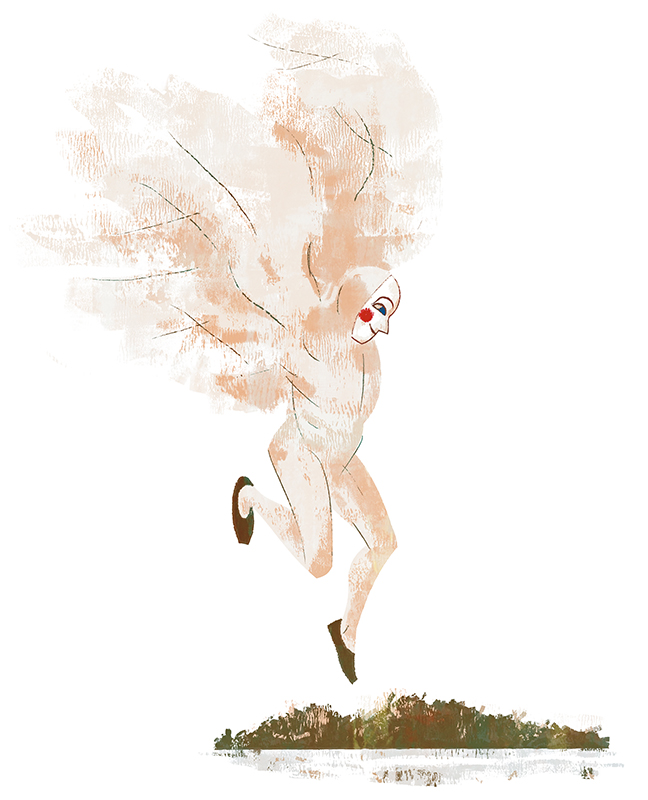 Più che deragliati, li potremmo definire naufraghi felici, dolcemente spiaggiati. È Omero che, nell’immaginario collettivo, crea questo archetipo del naufragio. In fondo il canto delle sirene è la nostra voce interiore, quel passato da cui vogliamo fuggire ma che inesorabilmente riemerge. Tiberio, deragliato della storia, a Capri vuole dimenticare, vuole cibarsi del fiore di loto. Goethe nel suo sventato naufragio sulle scogliere di Tragara, plasma nel futuro Romanticismo la figura del “Wandervogel”, l’artista che come un uccello migratore fugge le nebbie del Nord Europa per approdare nella solarità mediterranea. Così fu per Augusto Weber, poeta, filosofo, albergatore, che da Monaco di Baviera a piedi (nella sua vita lo fece cinque volte) arrivò a Capri per costruire la Strand-Pension. L’isola diventa il rifugio sicuro, l’isola fantastica dove si può iniziare una nuova vita, inseguire un sogno. Il conte Fersen, Norman Douglas, le Walcott-Perry e Krupp approdano, attratti da questo magnete spirituale, nell’isola dell’oblio, l’isola del sogno, l’isola del sonno. | De-railed. Rather than de-railed, we could call them happy shipwrecks, who are sweetly beached. It was Homer who, in the collective imagination, created this archetype of the shipwreck. When it comes down to it, the song of the sirens is our own internal voice, the past from which we want to escape but which inexorably re-emerges. Tiberius, de-railed by history, wanted to forget everything on Capri: he wanted to eat of the lotus flower. Goethe in his reckless shipwreck on the rocks of Tragara, shaped the figure of the “Wandervogel” in the future of Romanticism: the artist who, like a migratory bird, escapes the fogs of northern Europe to arrive on the sunny shores of the Mediterranean. That’s how it was for August Weber, poet, philosopher and hotel owner, who set out from Munich on foot (five times during his life) and came to Capri to build the Strand-Pension. The island became his safe refuge, the fantasy isle where he could begin a new life and follow a dream. Count Fersen, Norman Douglas, the Walcott-Perrys and the Krupps also came, attracted by this spiritual magnet, to the island of oblivion, the island of dreaming, the island of sleep.
Più che deragliati, li potremmo definire naufraghi felici, dolcemente spiaggiati. È Omero che, nell’immaginario collettivo, crea questo archetipo del naufragio. In fondo il canto delle sirene è la nostra voce interiore, quel passato da cui vogliamo fuggire ma che inesorabilmente riemerge. Tiberio, deragliato della storia, a Capri vuole dimenticare, vuole cibarsi del fiore di loto. Goethe nel suo sventato naufragio sulle scogliere di Tragara, plasma nel futuro Romanticismo la figura del “Wandervogel”, l’artista che come un uccello migratore fugge le nebbie del Nord Europa per approdare nella solarità mediterranea. Così fu per Augusto Weber, poeta, filosofo, albergatore, che da Monaco di Baviera a piedi (nella sua vita lo fece cinque volte) arrivò a Capri per costruire la Strand-Pension. L’isola diventa il rifugio sicuro, l’isola fantastica dove si può iniziare una nuova vita, inseguire un sogno. Il conte Fersen, Norman Douglas, le Walcott-Perry e Krupp approdano, attratti da questo magnete spirituale, nell’isola dell’oblio, l’isola del sogno, l’isola del sonno. | De-railed. Rather than de-railed, we could call them happy shipwrecks, who are sweetly beached. It was Homer who, in the collective imagination, created this archetype of the shipwreck. When it comes down to it, the song of the sirens is our own internal voice, the past from which we want to escape but which inexorably re-emerges. Tiberius, de-railed by history, wanted to forget everything on Capri: he wanted to eat of the lotus flower. Goethe in his reckless shipwreck on the rocks of Tragara, shaped the figure of the “Wandervogel” in the future of Romanticism: the artist who, like a migratory bird, escapes the fogs of northern Europe to arrive on the sunny shores of the Mediterranean. That’s how it was for August Weber, poet, philosopher and hotel owner, who set out from Munich on foot (five times during his life) and came to Capri to build the Strand-Pension. The island became his safe refuge, the fantasy isle where he could begin a new life and follow a dream. Count Fersen, Norman Douglas, the Walcott-Perrys and the Krupps also came, attracted by this spiritual magnet, to the island of oblivion, the island of dreaming, the island of sleep.





